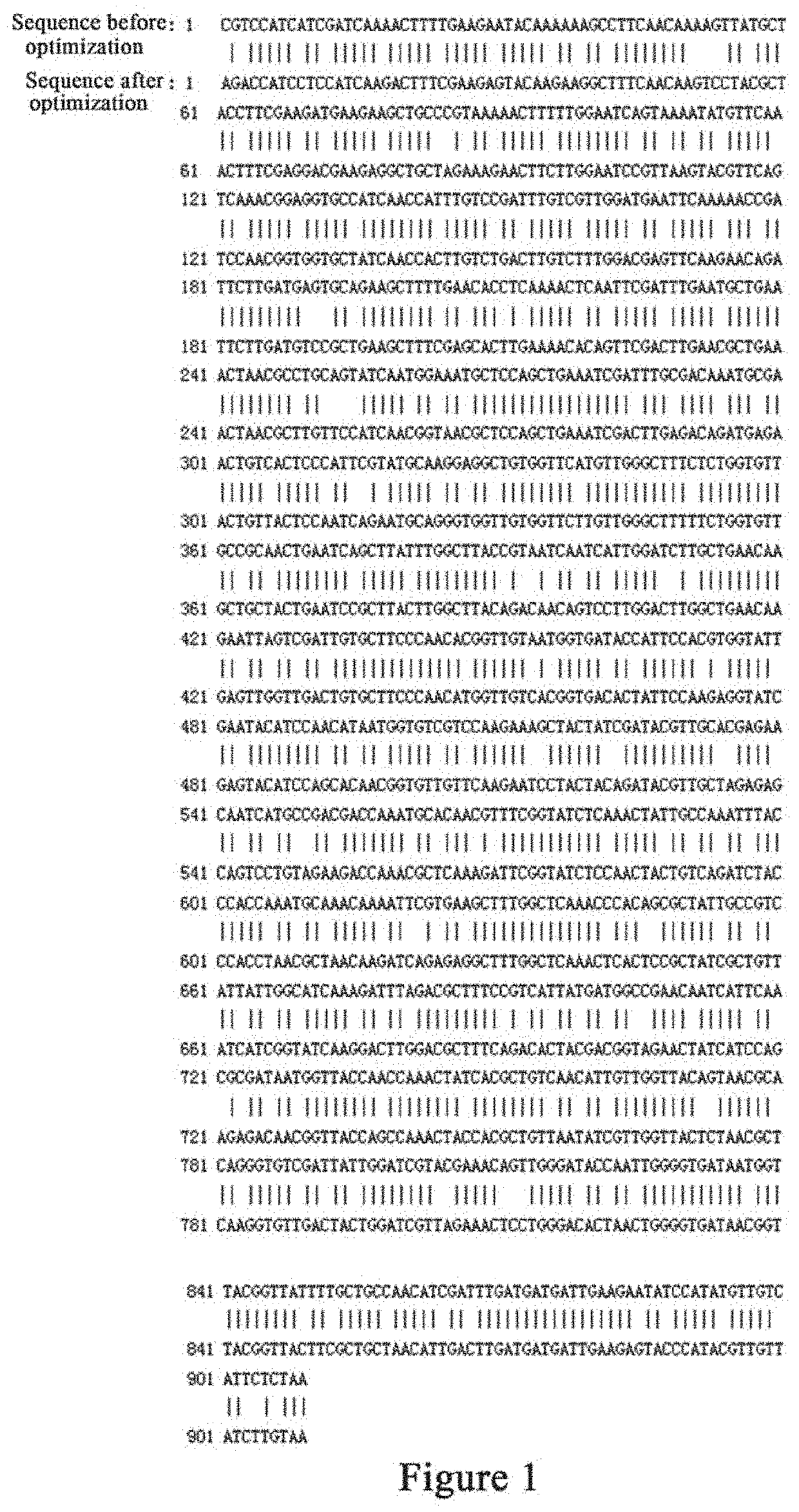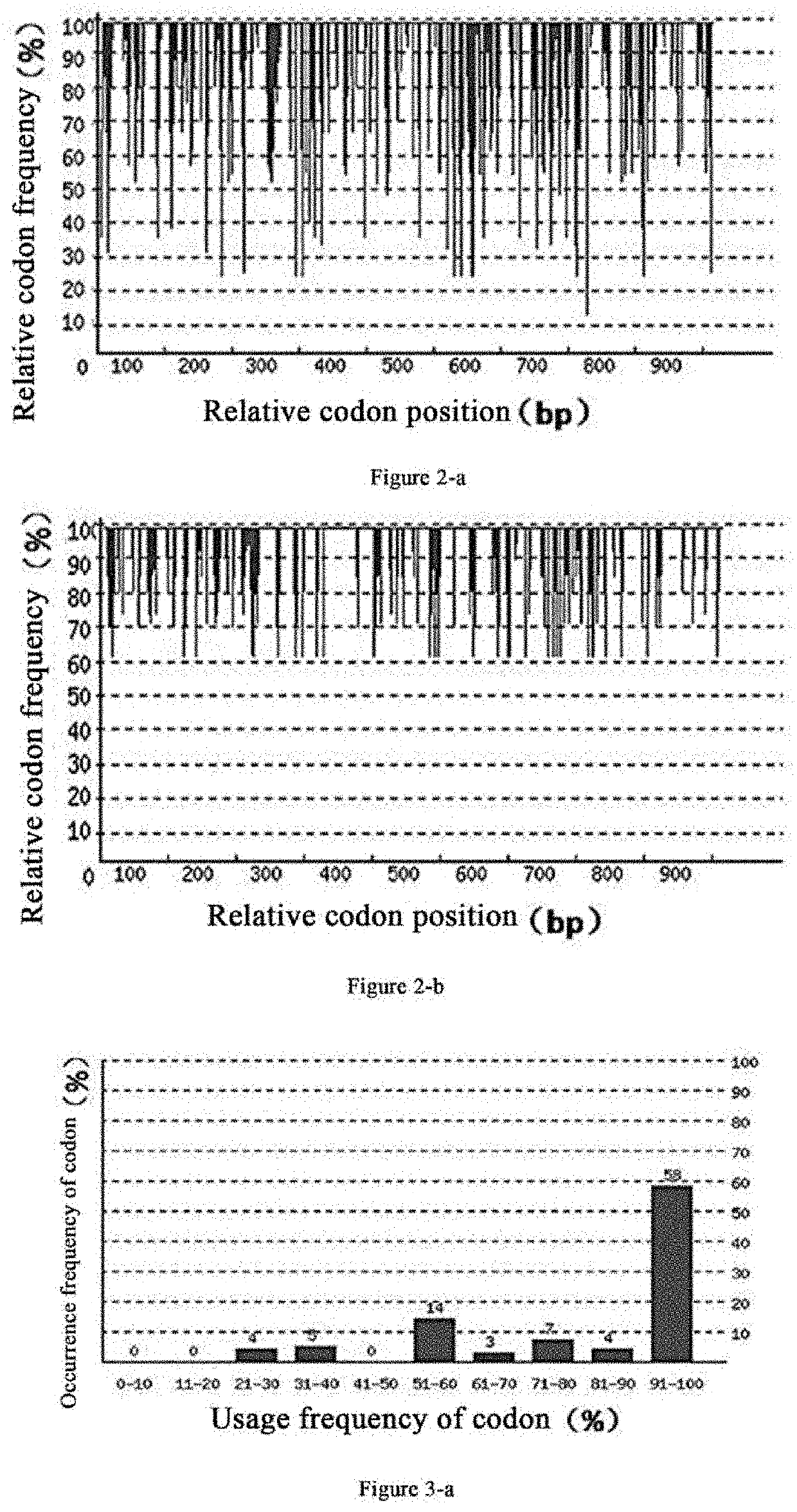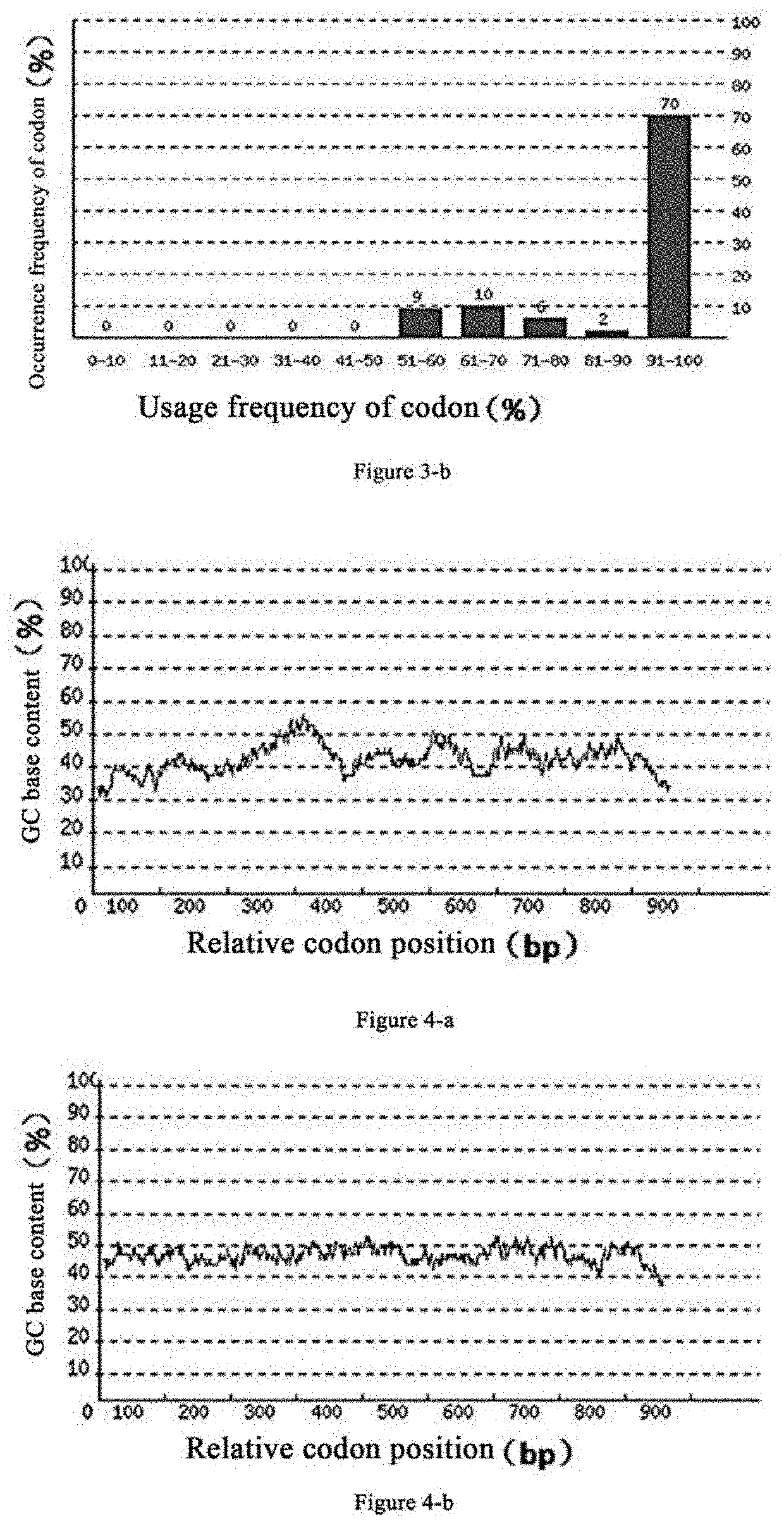Variant recombinant dermatophagoides pteronyssinus type 1 allergen protein and its preparation method and application
a technology of dermatophagoides pteronyssinus and recombinant dermatophagoides, which is applied in the field of bioengineering genes, can solve the problems of cumbersome process and high cost, long extraction method, and complex composition of natural allergen extracts, and achieves similar biological activity and high expression level.
- Summary
- Abstract
- Description
- Claims
- Application Information
AI Technical Summary
Benefits of technology
Problems solved by technology
Method used
Image
Examples
example 1
Codon Optimization of Recombinant proDer p1
[0064]Based on the DNA sequence of proDer p1 disclosed in EMBL-EBI (ENA accession no. FM177224.1), as shown in SEQ ID No: 2, the inventors performed codon optimization of the gene to obtain the proDer p1 gene of the present invention of which the nucleotide sequence is as shown in SEQ ID No: 1 and the amino acid sequence is as shown in SEQ ID No: 3. Comparison of each parameter before and after codon optimization of the proDer p1 is as follows:
[0065]1. Codon Adaptation Index (CAI)
[0066]As can be seen from FIG. 2-a, the codon adaptation index (CAI) of the original proDer p1 gene in the Pichia pastoris expression system before codon optimization is 0.77. As can be seen from FIG. 2-b, the proDer p1 gene has a CAI index of 0.9 in the Pichia pastoris expression system after codon optimization. Usually, when CAI=1, it is considered that the gene is in the most ideal expression state in the expression system. The lower the CAI index, the worse the...
example 2
Construction of an Expression Plasmid Containing the proDer p1 Gene
[0071]A sequence of XhoI restriction site was introduced at the 5′ end, and a sequence of XbaI restriction site was introduced at the 3′ end of the codon-optimized proDer p1, and then full gene synthesis was performed. The synthesized gene fragment was constructed into the pUC57 plasmid supplied by GenScript (Nanjing) Co., Ltd., thereby obtaining a plasmid for long-term preservation, denoted as pUC57-proDer p1 plasmid.
[0072]PCR amplification was performed using the pUC57-proDer p1 plasmid as a template, and primers of following sequences:
[0073]
upstream primer (SEQ ID No: 5):M13 F:TGT AAA ACG ACG GCC AGTdownstream primer (SEQ ID No: 6):M13 R:CAG GAA ACA GCT ATG AC
[0074]The total volume of the reaction was 50 μL, in which 2.5 μL of each primer at a concentration of 10 μmol / L was added, 1 μL of dNTP at a concentration of 10 mmol / L was added, and 0.5 μL DNA polymerase being Q5 (#M0491L, purchased from New England BioLabs...
example 3
Construction of a Pichia Pastoris Host Engineering Strain Containing a Recombinant proDer p1 Gene
[0075]Formulation of YPDS solid medium: the medium was formulated according to the instructions of Easy SelectPichia Expression Kit, Invitrogen, comprising 10 g / L yeast extract, 20 g / L peptone, 20 g / L glucose, 15 g / L agarose, and 182 g / L sorbitol.
[0076]1. Construction of a Host Engineering Strain Containing Codon-Optimized proDer p1
[0077]Electrocompetent cells were prepared according to the method of instructions of Easy SelectPichia Expression Kit, Invitrogen. The plasmid pPICZα-proDer p1 obtained in Example 2 was linearized with Sac I restriction endonuclease (#R0156S, purchased from New England Biolabs), and precipitated with ethanol. The linearized vector was electrotransformed into competent cells of Pichia pastoris X33. The cells were plated on YPDS solid media and cultured at 30° C. until the transformants grew.
PUM
| Property | Measurement | Unit |
|---|---|---|
| pH | aaaaa | aaaaa |
| pH | aaaaa | aaaaa |
| volume | aaaaa | aaaaa |
Abstract
Description
Claims
Application Information
 Login to View More
Login to View More - R&D
- Intellectual Property
- Life Sciences
- Materials
- Tech Scout
- Unparalleled Data Quality
- Higher Quality Content
- 60% Fewer Hallucinations
Browse by: Latest US Patents, China's latest patents, Technical Efficacy Thesaurus, Application Domain, Technology Topic, Popular Technical Reports.
© 2025 PatSnap. All rights reserved.Legal|Privacy policy|Modern Slavery Act Transparency Statement|Sitemap|About US| Contact US: help@patsnap.com



